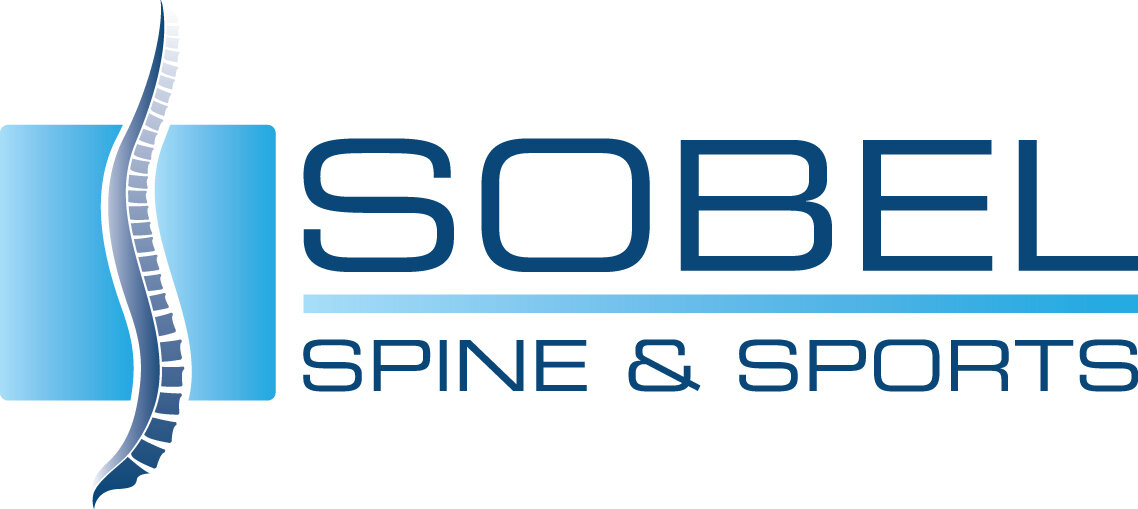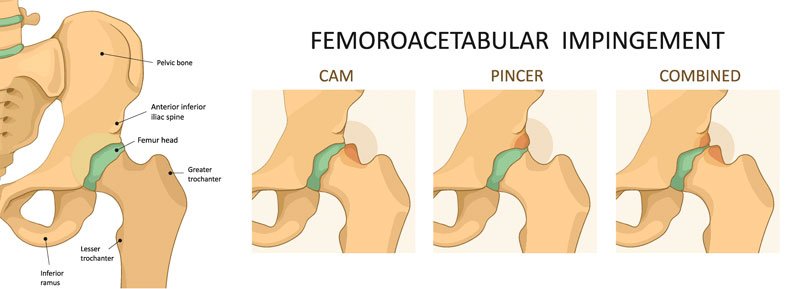Comprehensive Non-Surgical Solutions for Hip Pain
Introduction
Hip pain can be debilitating, whether it stems from the joint itself or surrounding structures. At Sobel Spine and Sports, we specialize in identifying the source of your pain and providing non-surgical treatment options that help restore your mobility and lifestyle without resorting to surgery.
Hip Joint Pain
Hip joint pain typically presents as deep discomfort in the front of the hip or groin. Common causes include:
Labral Tears
Damage to the ring of cartilage (labrum) that lines the hip socket may cause clicking, catching, or pain with hip movement.Femoroacetabular Impingement (FAI)
This mechanical mismatch between the femoral head and acetabulum can lead to early joint wear.Cam impingement: Excess bone on the femoral head
Pincer impingement: Excess coverage of the acetabulum
Many patients have mixed-type impingement with features of both.
Hip Osteoarthritis
A degenerative condition where cartilage wears down, causing pain, stiffness, and limited range of motion. This often worsens with activity or prolonged sitting.
Femoral Acetabular Impingement Syndrome (FAIS)
Normal Hip Joint Anatomy
Lateral Hip Pain
Pain on the outside of the hip, or greater trochanteric pain syndrome (GTPS), stems from irritation or degeneration in soft tissue structures such as:
Gluteus medius/minimus tendinopathy
Trochanteric bursitis- often times a secondary effect of a tendinopathy
Iliotibial band irritation
This condition is more common in active women, runners, and those with altered gait. Pain often worsens when lying on the affected side or climbing stairs.
Greater Trochanteric Pain Syndrome
-

Greater Trochanteric Pain Syndrome (GTPS)
GTPS can be very debilitating for some people making it difficult to stand and walk and perform many daily activities that we take for granted
-

Three Main Causes of GTPS
The pain can come from an inflamation of the bursa or the gluteus minimus and/or the gluteus medius tendon attachments
-

Physical Therapy is a Mainstay of Treatment
Physical therapy plays an important role in the rehabilitation of gluteal tendinopathy and trochanteric bursitis
Non-Surgical Treatment Options
At Sobel Spine and Sports, we offer advanced non-operative solutions for hip pain, customized to the source of your discomfort:
Fluoroscopy-Guided Hip Joint Injections
For intra-articular issues like labral tears or arthritis, Dr. Sobel performs precise cortisone or biologic injections using real-time x-ray guidance.Ultrasound-Guided or Fluoroscopy-Guided Lateral Hip Injections
Targeted treatment for GTPS using corticosteroid or regenerative injections to reduce inflammation and promote healing.Physical Therapy
Personalized programs focused on strengthening, mobility, gait retraining, and postural correction.Platelet-Rich Plasma (PRP) Therapy
Biologic therapy using your body’s platelets to accelerate tissue repair and reduce pain in both joint and soft tissue injuries.Activity Modification & Ergonomic Guidance
Adjustments in training, posture, or daily movements to reduce strain and prevent flare-ups.
Early intervention with the right conservative treatment plan can help you avoid surgery and return to an active life.
Ready to take the next step toward hip pain relief?
Schedule a consultation with Dr. Jerry Sobel at Sobel Spine and Sports in Phoenix to receive a personalized, non-surgical treatment plan.



